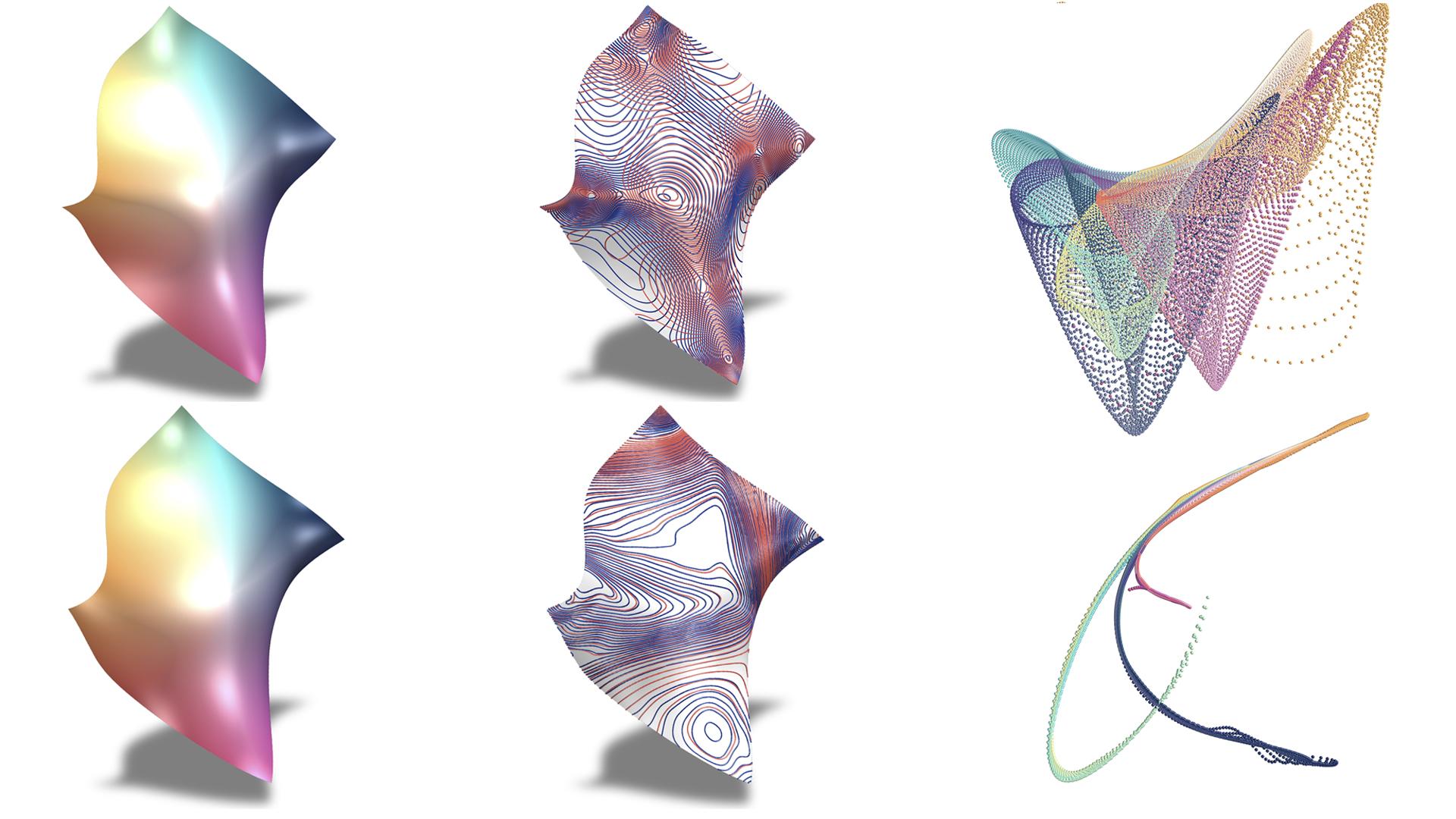In this paper we study Weingarten surfaces and explore their potential for fabrication-aware design in freeform architecture. Weingarten surfaces are characterized by a functional relation between their principal curvatures that implicitly defines approximate local congruences on the surface. These symmetries can be exploited to simplify surface paneling of double-curved
architectural skins through mold re-use.
We present an optimization approach to find a Weingarten surface that is close to a given input design. Leveraging insights from differential geometry, our method aligns curvature isolines of the surface in order to contract the curvature diagram from a 2D region into a 1D curve. The unknown functional curvature relation then emerges as the result of the optimization. We show how a robust and efficient numerical shape approximation method can be implemented using a guided projection approach on a high-order B-spline representation. This algorithm is applied in several design studies to illustrate how Weingarten surfaces define a versatile shape space for fabrication-aware exploration in freeform architecture. Our optimization algorithm provides the first practical tool to compute general Weingarten surfaces with arbitrary curvature relation, thus enabling new investigations into a rich, but as of yet largely unexplored class of surfaces.
